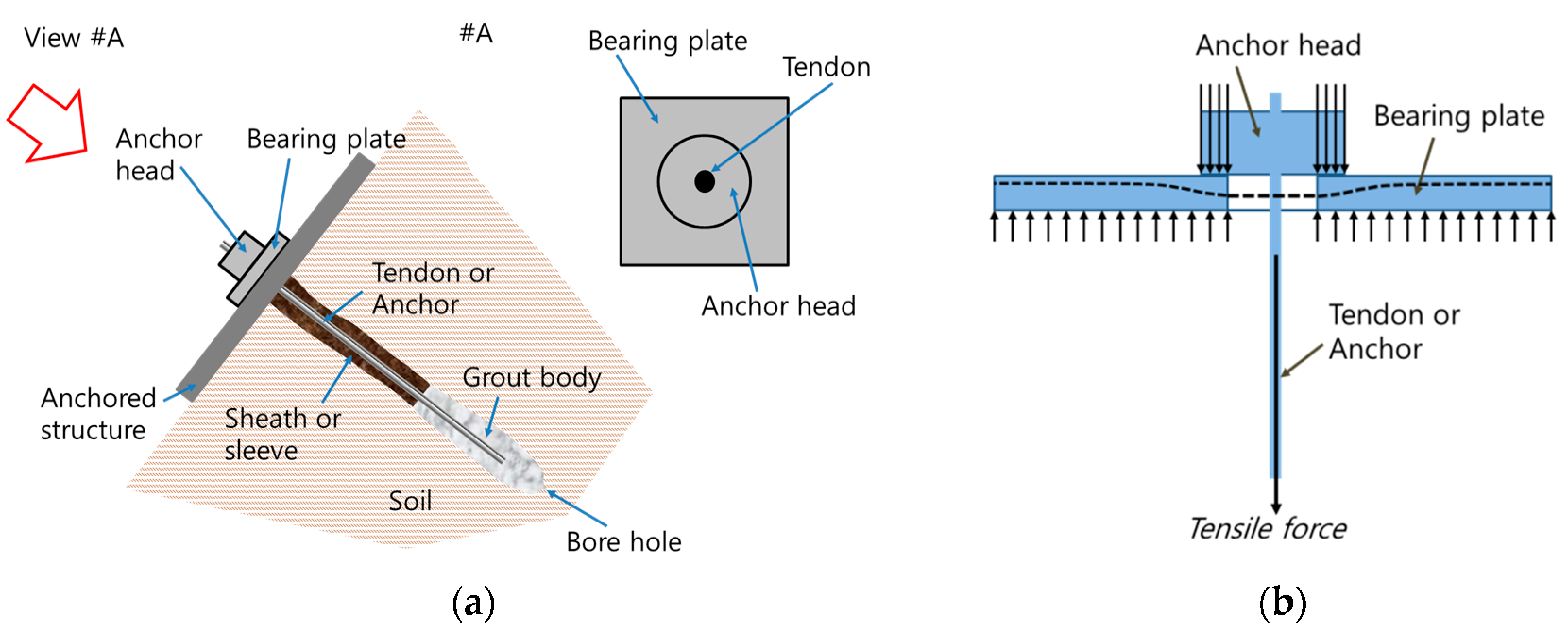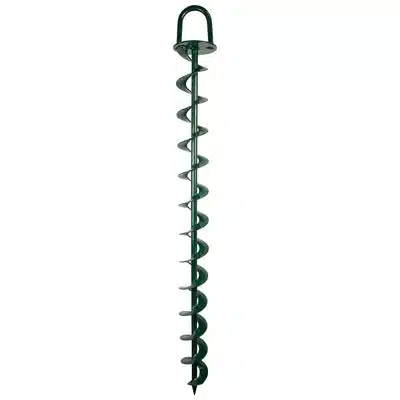How Heavy-Duty Earth Anchors Job: A Comprehensive Guide to Dirt Anchoring Solutions
Heavy-duty Earth supports play a vital role in providing security and support in numerous building applications. By embedding deeply right into the ground, they resist upright and lateral pressures effectively. Different sorts of anchors deal with various dirt problems, making them flexible. Understanding their auto mechanics and installation techniques is essential for making the most of performance. What factors influence their effectiveness, and just how do they compare to standard methods? The solutions might amaze you.
Comprehending Durable Earth Anchors
Sturdy Earth anchors act as important elements in various building and construction and landscape design jobs, giving stability and assistance in difficult soil conditions. These anchors work by being installed right into the ground, where they resist vertical and side pressures. Their style enables secure accessory to structures, guaranteeing they remain anchored against dirt motion or outside loads.The performance of heavy-duty Earth anchors largely depends on the sort of soil and the anchor's installment depth. Correct installment techniques are vital, as they identify the support's holding ability. Ecological variables, such as wetness and freeze-thaw cycles, can likewise impact performance.These anchors are often used in applications ranging from protecting fences and maintaining walls to stabilizing short-lived structures during unfavorable climate condition. Comprehending the principles behind sturdy Earth supports is vital for specialists looking for to boost the sturdiness and safety of their tasks.
Kinds of Heavy-Duty Earth Anchors
Different kinds of heavy-duty Earth supports are made to fulfill certain demands based upon soil conditions and project needs. Helical supports, featuring screw-like blades, work in softer soils, using high tons capabilities and easy installment. Driven supports, which are inculcated the ground, appropriate for rough surfaces and give instant tons support. Tie-back anchors are frequently made use of in preserving wall applications, permitting for lateral assistance by anchoring right into the ground at an angle. An additional type is the cast-in-place support, ideal for concrete applications, as they are incorporated into structures for enhanced security. Soil screw supports are versatile options that can be made use of in various soil kinds, providing reliable stress and compression capacities. Each type serves distinctive applications, guaranteeing security and safety and security in construction and landscape design projects. Comprehending these alternatives enables educated decisions in choosing the appropriate Earth anchoring solution.
The Mechanics of Dirt Anchoring

Recognizing the mechanics of soil anchoring needs an assessment of various kinds of Earth supports and their installment strategies. Each support type presents special characteristics that influence its effectiveness in different dirt conditions. Proper installment methods are vital for making the most of the anchoring system's stability and efficiency.
Kinds of Earth Anchors
Earth supports, necessary parts in soil anchoring systems, can be found in several types, each created for certain applications and soil conditions. The most usual kinds include screw anchors, which are twisted into the ground, providing strong lateral resistance. Helical anchors include blades that enable efficient installation in various soil kinds, making them ideal for both irreversible and short-lived applications. Driven supports, usually made from steel, are hammered into the dirt and are effective in rocky or thick settings. Auger supports use a helical style to facilitate installation in softer soils. Finally, plate supports include a level plate buried flat, distributing lots over a larger location, suitable for applications calling for high tons capacities in natural dirts.
Setup Techniques Explained
Correct setup methods are crucial for the effectiveness of dirt anchoring systems. The process normally starts with site analysis, verifying the picked location can sustain the anchor's lots. After figuring out the proper support kind, proper hole deepness and angle must be developed. The setup involves driving the support into the ground using specialized tools, such as manual or hydraulic vehicle drivers, to accomplish ideal embedment. Post-installation, tensioning the support is important to ensure stability; this is often validated with lots screening. Additionally, surrounding soil conditions must be kept an eye on to avoid displacement. Adhering to these methods not only enhances the anchor's efficiency yet additionally extends its life expectancy, supplying dependable assistance for various applications.
Applications of Heavy-Duty Earth Anchors
While durable Earth supports are often associated with construction and landscaping, their adaptability reaches a selection of applications throughout different industries. In civil engineering, they offer necessary assistance for retaining walls, ensuring stability in areas vulnerable to dirt erosion. The marine market makes use of these anchors for protecting docks and marinas, protecting against movement triggered by trends and currents. Additionally, in the telecommunications sector, durable Earth anchors are considerable for stabilizing cell towers and various other high structures versus wind forces. Agricultural applications also profit, as these anchors can safeguard structures like greenhouses and livestock secure fencing, guaranteeing they endure extreme climate condition. In eco-friendly energy projects, such as wind ranches, Earth supports play a crucial role in safeguarding wind turbine foundations, boosting general safety and efficiency. This broad variety of applications highlights the flexibility and integrity of heavy-duty Earth supports across numerous fields.
Benefits Over Standard Anchoring Techniques
Although conventional anchoring methods have actually long been counted upon for security, heavy-duty Earth supports provide substantial benefits that improve efficiency and effectiveness. One major advantage is their superior load-bearing capability, which enables them to withstand higher pressures without failure. This stamina makes them suitable for demanding applications, such as in building and energy installations.Additionally, heavy-duty Earth supports are made for deeper setup, supplying greater security in various soil problems, including sandy or loose dirts. Their resistance to deterioration and ecological aspects ensures a longer life expectancy and decreased maintenance expenses contrasted to traditional methods.Moreover, these anchors can be set up with very little disruption to the surrounding area, maintaining the stability of the landscape. Generally, heavy-duty Earth supports offer a trusted and efficient remedy for securing needs, exceeding the constraints often related to conventional anchoring strategies.
Installment Process and Finest Practices
The installment procedure for dirt anchoring services begins with detailed prep work and website assessment to guarantee peak efficiency. Following this, a step-by-step installation overview gives clear guidelines for efficient application (construction site anchors). Following these finest methods is crucial for attaining durable and trustworthy anchoring results
Prep Work and Site Assessment
Effective preparation and detailed website assessment are important steps in the installation of dirt securing remedies. Prior to installation, the dirt kind should be evaluated to determine its bearing capacity and suitability for anchoring. Conducting a geotechnical study can provide vital details concerning dirt composition, moisture degrees, and potential ground motion. Additionally, determining existing structures, greenery, and utilities is vital to stay clear of interference during installment. The area must be removed of debris and challenges to assure risk-free accessibility for tools. Weather must likewise be kept track of, as adverse problems can affect both security and installment efficacy. By meticulously preparing the website and assessing all pertinent factors, the probability of successful anchor performance is substantially enhanced.
Step-by-Step Installation Guide
An extensive setup procedure is crucial for attaining perfect efficiency of dirt anchoring services. The setup starts with choosing the ideal anchor type and guaranteeing the site is free from particles. Next, proper opening positioning is figured out based upon load requirements. As soon as the area is developed, openings are pierced to the specified deepness and size making use of the correct tools. The anchor is then placed right into the hole, making certain it is aligned properly. After protecting the anchor, soil is backfilled and compressed to improve security. It is important to adhere to supplier guidelines throughout the process. A post-installation examination validates that the supports are properly positioned and functioning as planned, providing dependable support for the desired application.

Maintenance and Evaluation of Earth Anchors
Routine upkeep and evaluation of Earth supports are vital for ensuring long-lasting efficiency and security. Regular checks permit the early discovery of concerns such as corrosion, loosening, or dirt motion. Assessors need to search for signs of corrosion or deterioration on the anchor parts, specifically at the connection factors. In addition, the bordering dirt must be evaluated for erosion or changes in wetness content, which can impact support effectiveness.It is a good idea to develop a routine assessment pop over here timetable, preferably at the very least annually, depending upon ecological conditions. During assessments, all visible elements must be cleansed to eliminate dust or particles that can hide potential problems. Any kind of signs of distress, such as tilting structures or unusual settling, must motivate instant evaluation. Proper documents of evaluations go to this site can assist in monitoring support efficiency in time and assist in prompt upkeep activities, guaranteeing the supports stay useful and reputable.
Regularly Asked Questions
What Products Are Heavy-Duty Earth Anchors Usually Made From?
Heavy-duty Earth supports are commonly constructed from durable products such as galvanized steel or stainless steel, guaranteeing stamina and resistance to rust. These products supply long-lasting assistance and security in different soil problems and applications.
Just How Do Dirt Conditions Influence Anchor Efficiency?
Soil problems greatly influence support efficiency. Elements such as dirt type, wetness web content, and compaction affect the anchor's grip and security, with cohesive soils typically giving better resistance than sandy or loosened soils, impacting general efficiency.
Can Heavy-Duty Earth Anchors Be Reused After Elimination?
Durable Earth anchors can be reused after removal, supplied they are examined for damages and wear. Appropriate cleansing and maintenance enhance their durability, making sure reliable performance in subsequent setups when problems enable safe reinstallation.
What Are the Environmental Effects of Using Earth Anchors?
The ecological effects of making use of Earth anchors consist of prospective dirt disturbance, disturbance of local environments, and possible contamination of groundwater. However, if made use of sensibly, their benefits usually exceed these worries, advertising stability in numerous applications.
Just how Do I Select the Right Anchor for My Job?
